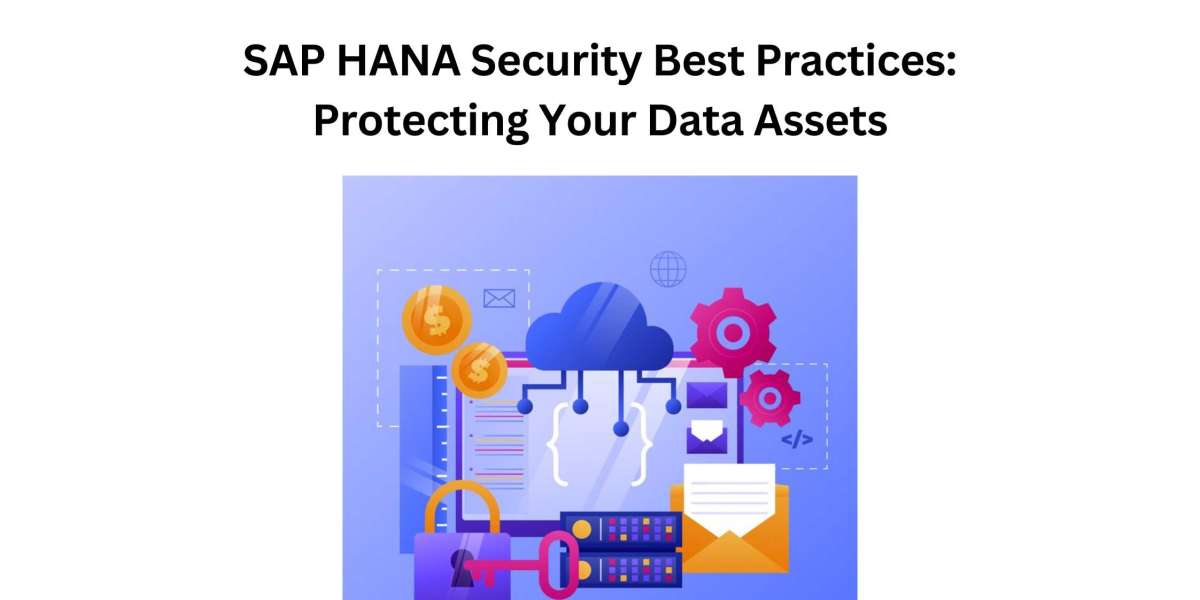Introduction: As organizations increasingly rely on SAP HANA for their data management and analytics needs, it becomes paramount to prioritize the security of these critical assets. SAP HANA holds vast amounts of sensitive data, making it a prime target for cyber threats and unauthorized access. In this blog, we will explore essential security best practices for SAP HANA, enabling organizations to protect their data assets and maintain the integrity and confidentiality of their information.
Secure System Configuration: Begin by ensuring a secure system configuration for SAP HANA. Follow SAP’s guidelines and recommendations for system hardening, including applying the latest patches, disabling unnecessary services and ports, and implementing secure network communication protocols like SSL/TLS. Regularly review and update system configurations to address any newly identified vulnerabilities.
Role-Based Access Control (RBAC): Implement a robust Role-Based Access Control (RBAC) model to manage user access to SAP HANA. Assign roles and privileges based on the principle of least privilege, granting users only the access necessary for their specific roles and responsibilities. Regularly review and update user access permissions to align with changes in organizational structure and personnel.
Authentication and Authorization: Enforce strong authentication mechanisms for accessing SAP HANA. Implement multi-factor authentication (MFA) to add an extra layer of security. Leverage technologies such as Kerberos or Active Directory integration for user authentication. Additionally, implement authorization checks at various levels, including database, schema, and table levels, to ensure data access is restricted according to defined roles and privileges.
Data Encryption: Implement data encryption at rest and in transit to protect sensitive data stored in SAP HANA. Utilize industry-standard encryption algorithms to secure data on storage devices and backups. Implement secure communication channels using SSL/TLS protocols to protect data transmitted between clients and the SAP HANA database. Regularly rotate encryption keys to enhance security.
Secure Network Configuration: Implement secure network configurations for SAP HANA systems. Use firewalls and network segmentation to isolate SAP HANA systems from the public internet and other untrusted networks. Restrict access to SAP HANA systems to authorized IP addresses or specific network ranges. Regularly monitor network traffic and logs for any suspicious activities or unauthorized access attempts.
Regular Security Patching: Stay up to date with the latest security patches and updates provided by SAP for SAP HANA. Establish a regular patch management process to ensure the timely installation of security fixes. Regularly review SAP security advisories and apply relevant patches promptly to mitigate potential vulnerabilities.
Monitoring and Logging: Implement comprehensive monitoring and logging mechanisms to detect and respond to security incidents effectively. Monitor system logs, network traffic, and user activities to identify any anomalies or suspicious behavior. Implement real-time alerting mechanisms to notify security teams of potential threats or breaches. Regularly review and analyze logs to identify any security weaknesses and take appropriate actions.
Security Awareness Training: Educate employees about the importance of security and their roles in safeguarding SAP HANA data. Provide regular security awareness training to personnel, highlighting best practices, security policies, and potential risks. Foster a culture of security consciousness within the organization to ensure that everyone understands their responsibilities in protecting data assets.
Regular Vulnerability Assessments and Penetration Testing: Perform regular vulnerability assessments and penetration testing on SAP HANA systems to identify potential security weaknesses. Engage third-party security experts to conduct thorough assessments and identify any vulnerabilities that could be exploited by attackers. Address identified vulnerabilities promptly to minimize risks to the SAP HANA environment.
Disaster Recovery and Business Continuity Planning: Develop a robust disaster recovery and business continuity plan specific to SAP HANA. Regularly test and validate the effectiveness of the plan to ensure that data assets can be restored and operations can resume quickly in the event of a security incident or system failure.
Conclusion: Securing SAP HANA is crucial to protect the integrity, confidentiality, and availability of critical data assets. By implementing best practices such as secure system configuration, RBAC, authentication and authorization, data encryption, secure network configuration, regular patching, monitoring and logging, security awareness training, vulnerability assessments, and disaster recovery planning, organizations can fortify their SAP HANA environments against potential threats. Prioritizing security in SAP HANA operations not only safeguards sensitive data but also fosters trust, compliance with regulations, and the overall resilience of the organization.
#AvenDATA #legacydata #SAPHana #SAPSystems #SAParchiving #dataarchiving








